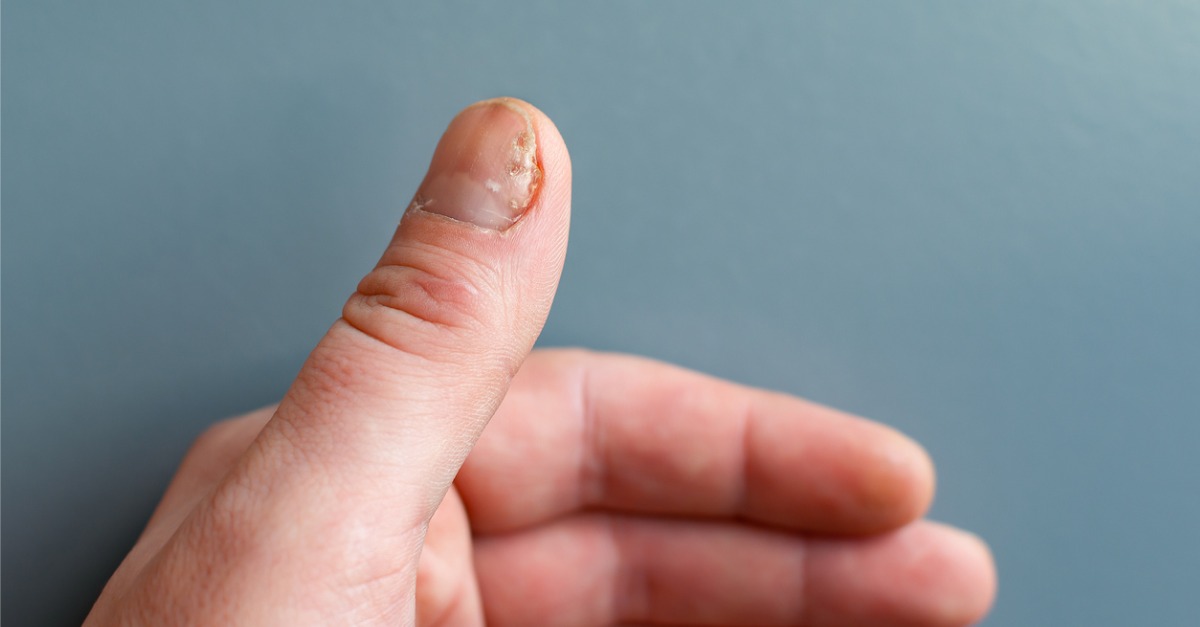If you thought sandal season was the only time to worry about your toenails, think again. Fungi tend to develop in dark, moist conditions: like the inside of your favorite slippers or snow boots. While less common, fungal nail infections can also develop on the hands — especially for people who spend a lot of time wearing gloves or mittens. This winter, be sure to check your nails regularly for the following signs of a fungal infection.
Symptoms of a Fungal Nail Infection
Brittleness
Nails that are affected by fungal infections are notoriously dry and brittle. They may become fragile, breaking off more easily or crumbling and becoming ragged. This can make it challenging to trim your nails into a neat shape.
Thickening
While fragility is a common factor, some fungi cause nails to become thicker. Take note if it’s difficult to clip or trim your nails, as this is a predictive warning sign of a fungal infection.
Discoloration
Healthy nails are usually flesh-colored with white tips. If your nails have become yellowed or browned, it’s possible that you have a nail fungus. Sometimes, the discoloration may start at the tip of the nail, and then spread with the infection.
Separation
A fungal infection can cause your nail to separate from the nail bed beneath. While not necessarily painful where it’s already occurred, a nail that’s lifted from the bed may be a hazard for peeling back further, which can cause injury or complete nail loss. It can also allow debris to accumulate beneath the nail, a risk factor for further infection.
Nail Fungus Treatment
In most cases, nail fungus isn’t serious. But if you have diabetes or another autoimmune condition, a toenail fungus could become dangerous over time. For people with circulatory issues, even minor toe injuries can develop into nonhealing wounds. It’s therefore critical that people with diabetes and other disorders inspect their feet regularly and maintain proper foot hygiene. Drying your feet completely and wearing clean footwear at all times, including inside the house, can help you avoid nail fungus.
Of course, you might simply find nail fungus bothersome or feel self-conscious about it. While the condition can be challenging to eradicate, there are treatment options available. Antifungal creams are one option to consider, as are medicated polishes. These solutions deliver varying results, however. If you experience severe symptoms, you might consider talking to your doctor about oral antifungal drugs. Keep in mind that it will likely take the duration of a full nail growth cycle to see results, and since these medications can cause side effects, you may be required to have blood work done while taking them.
Even if you don’t have circulatory issues, the best approach for nail fungus is prevention. Reduce your risk by wearing clean, breathable socks. If you’re playing winter sports, remove your footwear as soon as you’re done, and consider bringing a fresh pair of socks to wear until you can shower. Wear sandals in the gym locker room and other communal showers or pools. Finally, trim your toenails straight across and disinfect your clippers.
If you have a persistent skin issue like nail fungus, allow our board-certified dermatologists to create a personalized treatment plan for you. Book an appointment online or by calling 404-355-5484.


